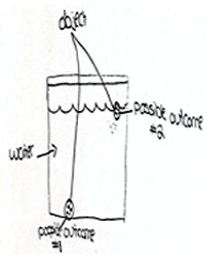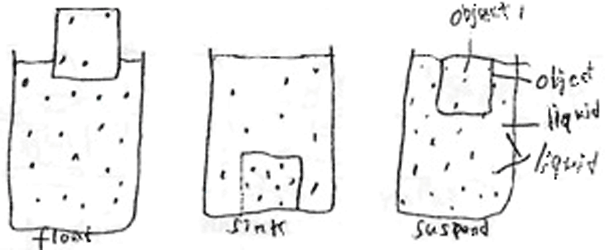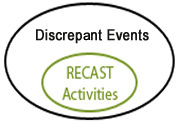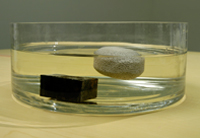RECAST activities are designed to help students see the embedded causal structure of a concept in new ways. The outcomes often surprise students because they don’t fit with what one expects.
In the Two Candles Activity (video), students initially use a linear causal model to explain sinking and floating (as pictured) because they don’t pay attention to the liquid. The activity pushes their attention to the liquid and helps them shift to a relational causal model where the relationship between the density of the liquid and the density of the object causes it to sink or float (as pictured).

"The weight makes things sink, so my diagram shows that the heavier one sinks and the lighter one floats."

"An object floats or sinks because of its relationship with the liquid. If an object has a higher density than the liquid it sink, but if it has a lower density, then it would float. If you have an object and liquid with the same density, then it will suspend."

RECAST activities are a special type of discrepant event, but not all discrepant events are RECAST activities. For example, many students are surprised that a rock called pumice floats in water and that wood called lignum vitae sinks in water. Realizing this causes them to shift their categories about how wood and rocks behave in water but it does not change how they view the causality involved in sinking and floating.





